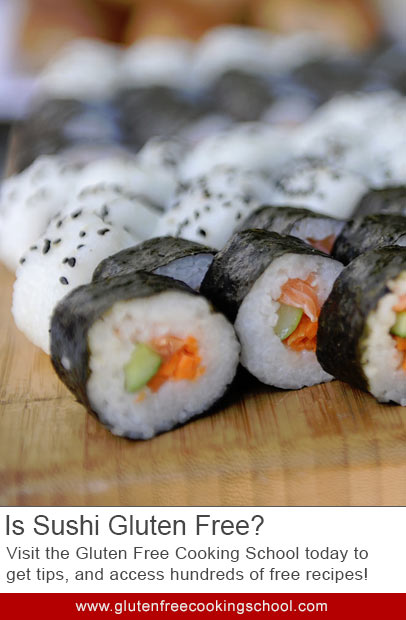Sushi is made with raw or cooked seafood, rice, and vegetables. If the seafood contains imitation crab or any other imitation meat that is not just real seafood, then it may contain gluten. The rice, fish, and seaweed are of course gluten-free, and is safe for people with a gluten insensitivity. However some types of sushi do have some trace amounts of gluten in it and extreme sufferers should be aware of that.
Rice generally doesn’t have gluten regardless of whether it is white rice, brown rice or wild rice. Certain types, such as sticky rice and glutinous rice (that is uncommonly used in sushi) may contain some gluten. Be aware of the type of rice included in your food in these situations to be sure of the lack of gluten content. However the gluten content is relatively small and does not commonly cause the same problems as other types of wheat and grains.
Sushi can contain a wide range of other ingredients like avocados and cucumbers, and sweet potatoes and even noodles strands. Some of these ingredients have gluten so pay attention when you order sushi rolls. Gluten can be found in imitation crab, because some imitation crab uses wheat as a filler. Be aware of what is included in your sushi and monitor those ingredients If you have an extreme sensitivity to gluten as well. Be careful of soy sauce too, as some soy sauces are made with wheat, so be warned.
